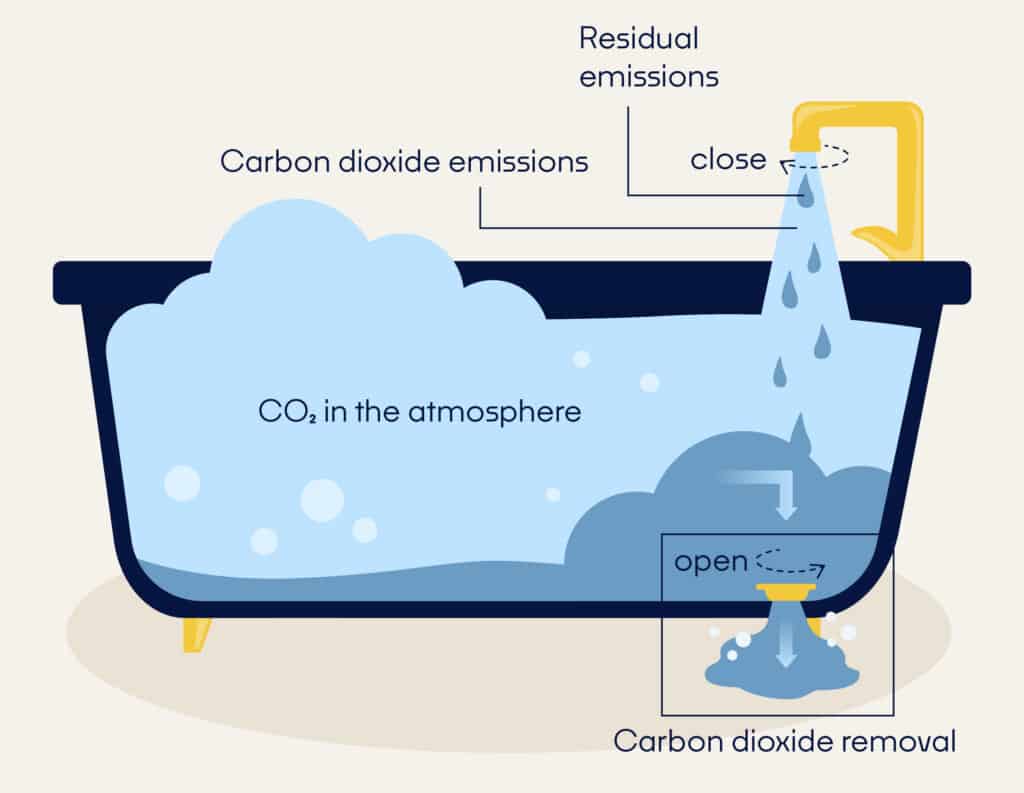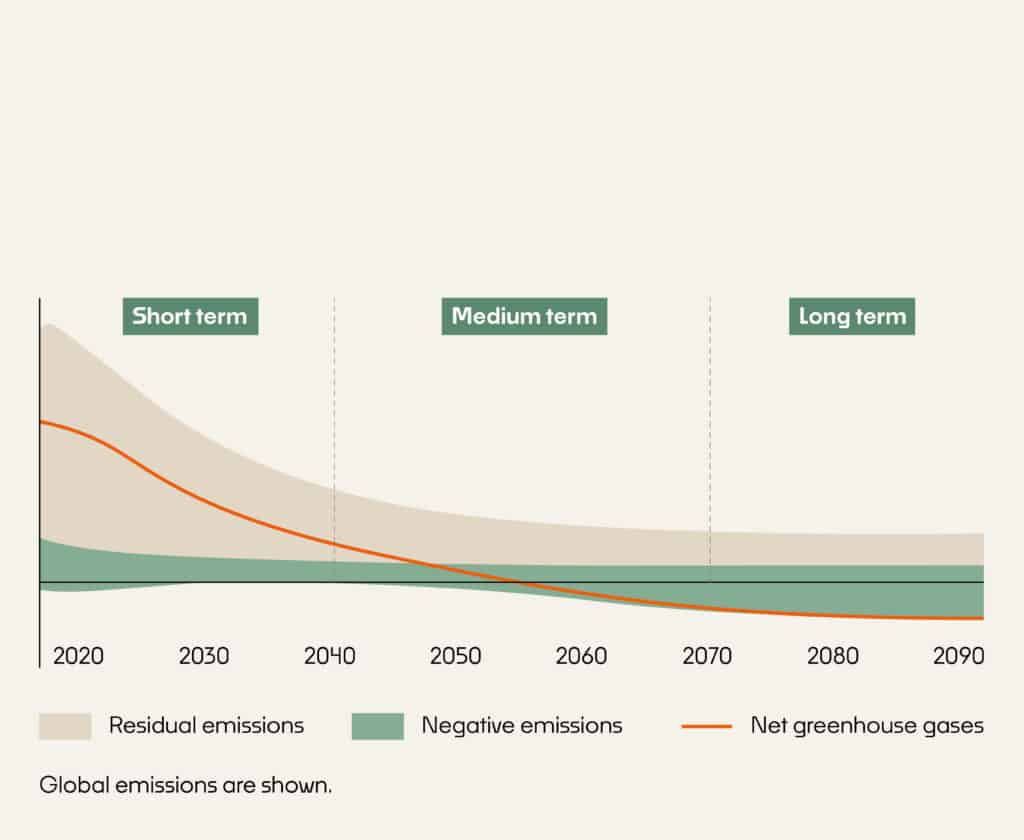
Why Remove Carbon from the Atmosphere?
24. September 2025
Because there is too much of it — and that drives global warming. Negative emissions make an essential contribution to meeting our climate goals: stabilizing CO₂ levels in the atmosphere, compensating for hard-to-avoid residual emissions, and eventually removing more CO₂ than we emit.
Negative Emissions Are Key to Climate Neutrality
To contain the dangers of climate change and secure a livable future, many countries have set climate targets. Germany aims to become climate neutral by 2045. But climate neutrality — net zero emissions — is not possible without negative emissions. In every scenario modeled by the IPCC, carbon dioxide removal (CDR) plays a crucial role. It is not enough to drastically reduce emissions — we must also actively remove CO₂ from the atmosphere.
The Bathtub Analogy
CO₂ in the atmosphere can be visualized as water in a bathtub. The faucet represents our emissions: the more water flows in, the higher the level rises. To prevent the bathtub from overflowing — i.e., global warming from running out of control — we must turn down the faucet. That means reducing emissions.
Emission reductions are the biggest lever, but the faucet cannot be closed completely. Some water will always flow in — these are the hard-to-avoid residual emissions. That is why we also need the drain: carbon removal. Only by opening the drain can we lower the water level and stabilize the climate.

Net Zero Needs Negative Emissions
To achieve climate neutrality, we must drastically reduce emissions over time, while simultaneously removing large amounts of CO₂ from the atmosphere. The graph below illustrates the interplay between residual emissions and negative emissions, as well as the short-, medium- and long-term net result (red line).
In the short term, negative emissions help to reduce net emissions; in the medium term, we will achieve net zero; and in the long term, we even want to remove more CO2 from the atmosphere than we emit into it. This is important for removing historical emissions and particularly important for overshoot emissions.

Negative Emissions Are Not a Hoax
CDR is not a substitute for emission reductions, nor an excuse to delay phasing out fossil fuels. It is a necessary complement, because some emissions — for example from aviation — cannot be avoided. By 2045, Germany will still face 37 to 127 million tons of residual CO₂ emissions annually. We have just 20 years to build an industry and infrastructure capable of removing such volumes using a mix of technical and nature-based solutions. Without these capacities, Germany’s goal of climate neutrality by 2045 will remain out of reach.
A Driver of Growth and Jobs
Carbon dioxide removal can do even more than save the climate. A new industry is emerging. Taking Germany as an example: Negative emissions could develop into a €70 billion sector in Germany by 2050 — nearly half the current economic contribution of the German automotive industry. Up to 190,000 secure future jobs could be created, more than are currently employed in the country’s wind energy sector.
CDR Pavilion at COP30
Given its crucial importance, CDR must be given much greater visibility and understanding globally. Then we, as a global community, will also be able to increase negative emissions to the required level.
It is therefore encouraging that this year’s COP30 climate conference in Brazil will feature a CDR Pavilion. For the first time, CDR will have a dedicated space at the heart of international climate negotiations — to connect policymakers and investors with innovators, showcase technologies through live experiences, and anchor a global alliance committed to scaling carbon removals. Find out more at https://cdr30.org/.